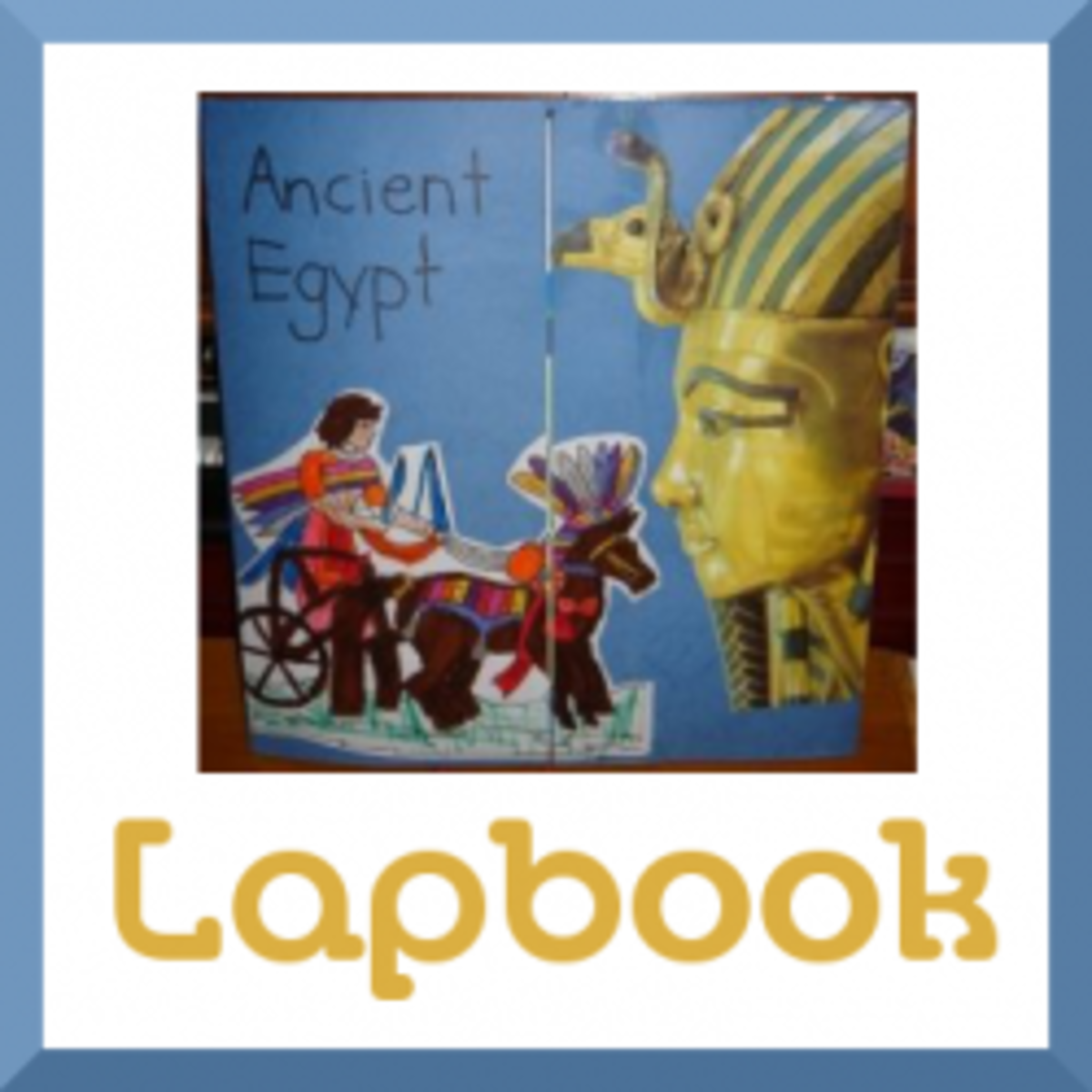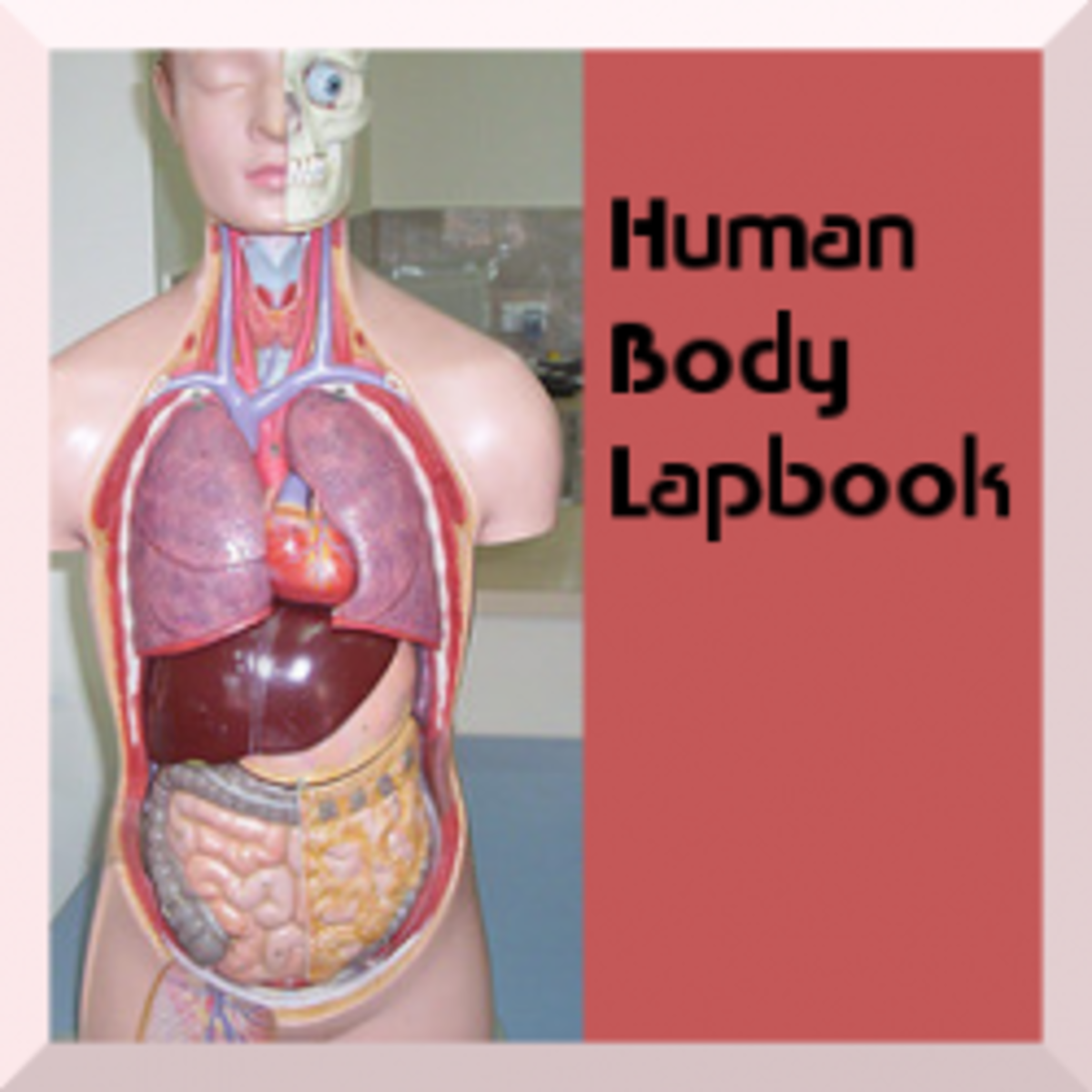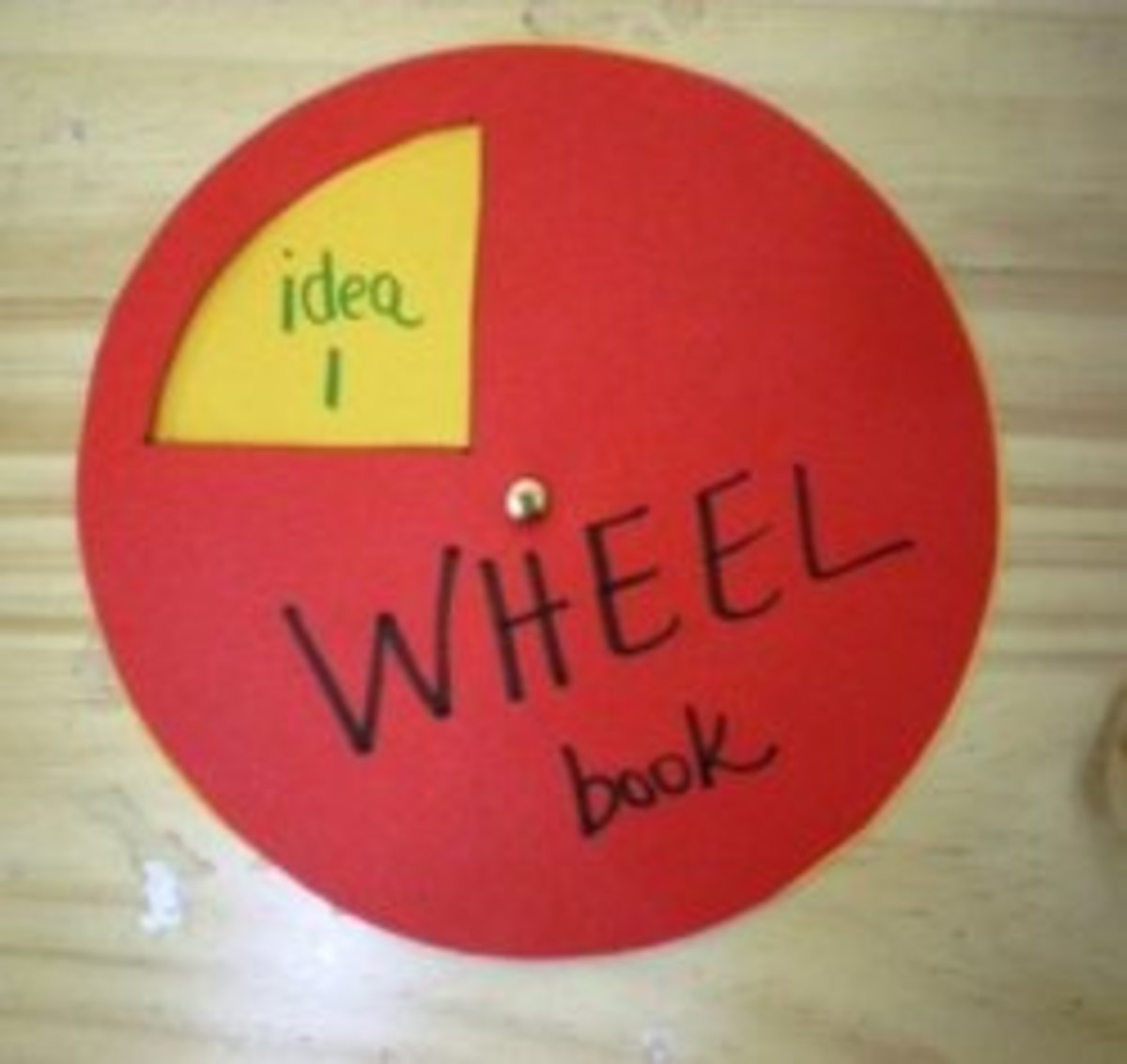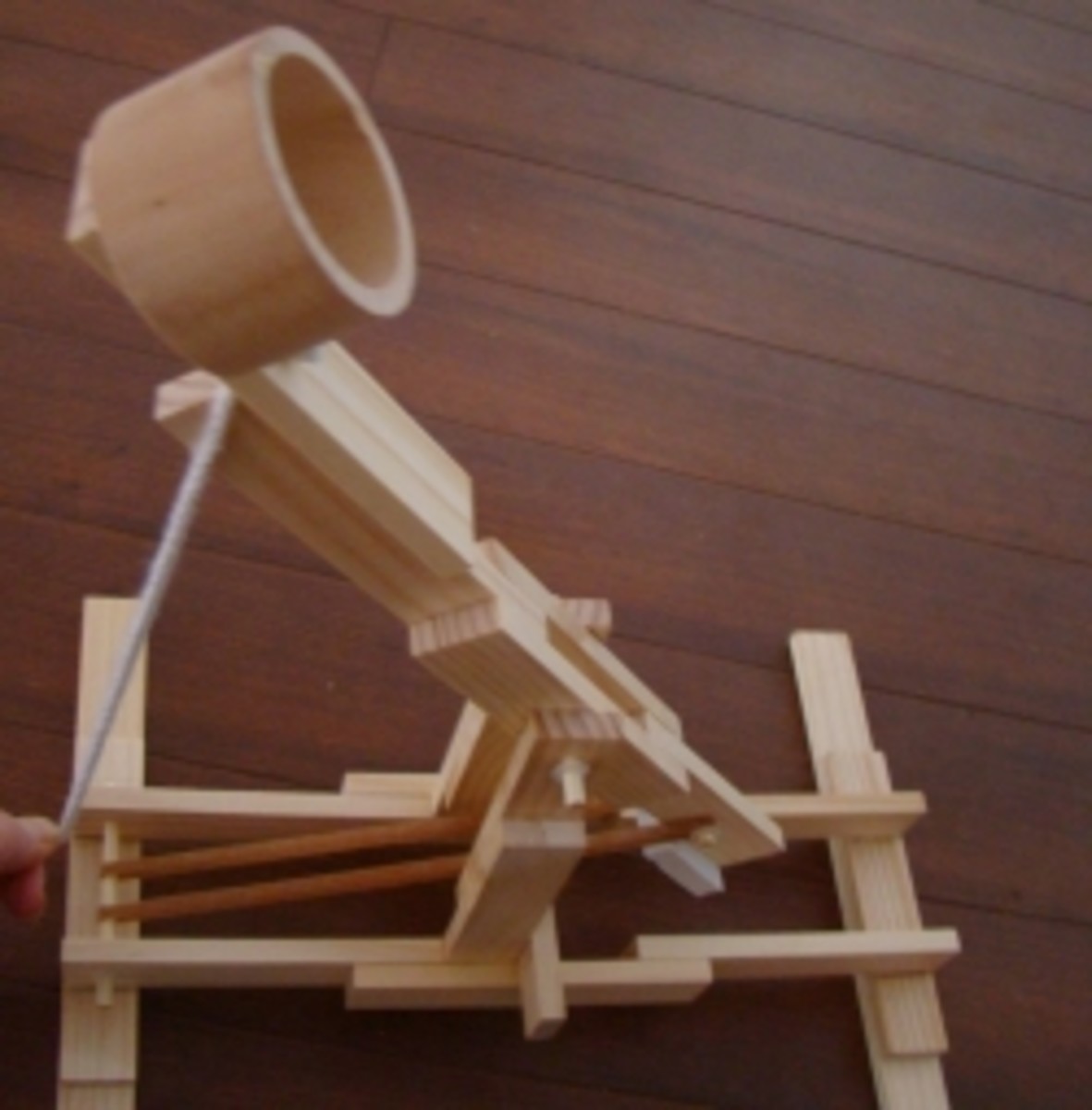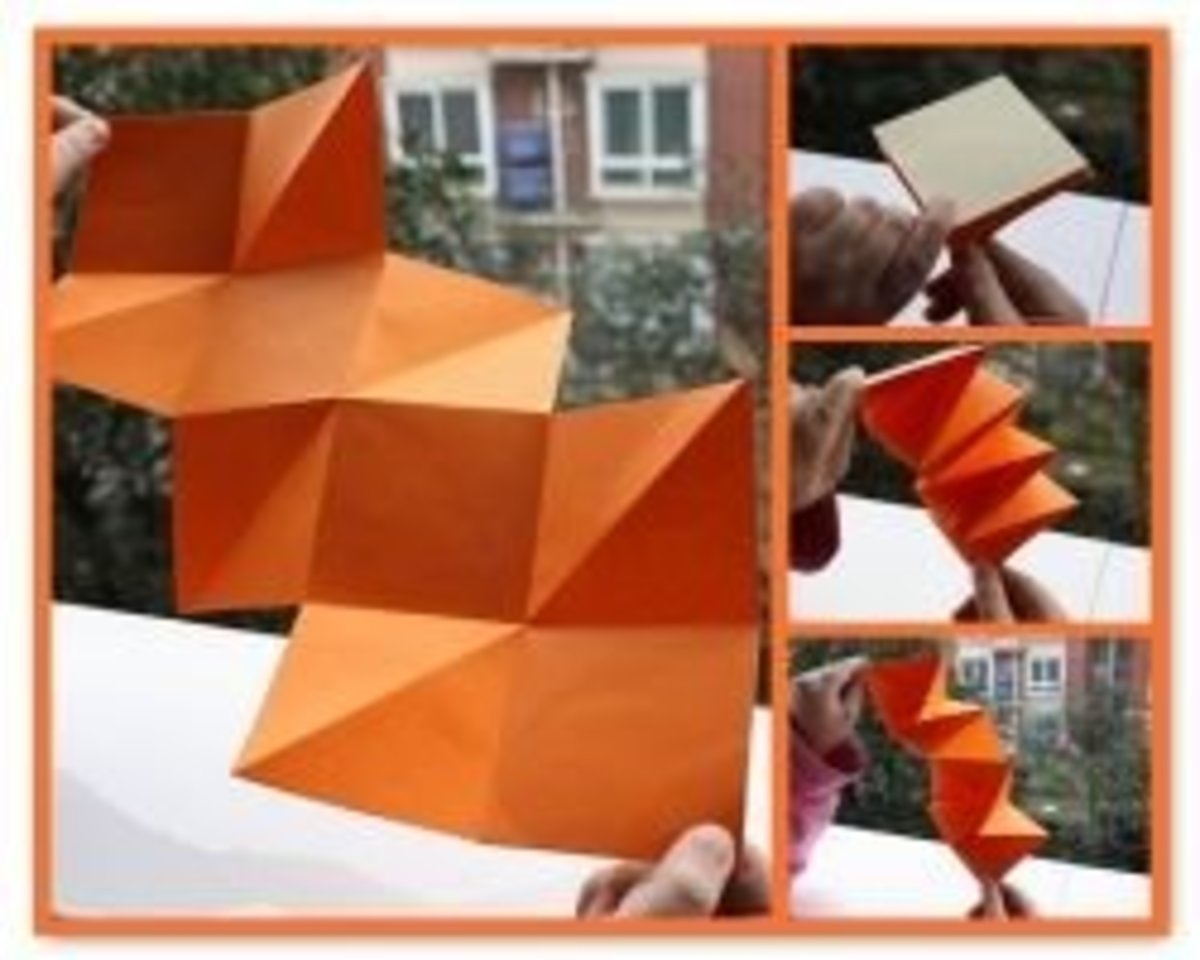Homeschooling: A Typical Day At Our House
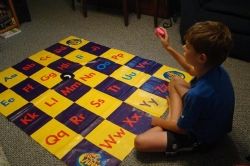
Wonder what a typical homeschool day is like?
A typical homeschool day? I don't think such a thing exists. There are probably almost as many ways to homeschool as there are homeschooling families! This is how it should be too, as are any two kids really the same? They not only have varying learning styles, but also different needs, abilities, personal interests, strengths, weaknesses, and goals.
So why I may not be able to describe a "typical homeschool day," I can give you a glimpse into an average homeschool day at our house!
I took several photos of my son and I engaged in learning activities one day in late August. You'll find them, along with a description of what we did that day, below. I've also included some links to where you can find the curriculum we use, if you're interested.
If a child can't learn the way we teach, maybe we should teach they way they learn.
— Ignacio EstradaMy Personal Style of Education
How We Homeschool In Our Family
In our family, our approach is unlike many, in that we don't unschool, nor do we "do public school at home." We're somewhere in the middle. If you've read my Education: My Views, Experiences, And Favorites Quotes website here on Hubpages, you already know a little about my educational philosophy. I very much believe in individualizing one's homeschool program to suit the needs, learning style, and interests of the child. Why force a child to do school one way, when his or her learning style best fits another? That's one of the beauties of homeschooling! We can match our homeschool style to the needs of our individual children! Sure, that's not always easy. But it's worth it.
In our house, while we do have some paper and pencil lessons, much of our day is spent with hands-on activities, educational games, science experiments, reading, discussion, acting out things we've read in history, making models, etc. I believe that kids learn better when they are physically involved, rather than just sitting passively at a desk filling in worksheets. Research supports this as well.
Would you like to read an interesting article on the connection between physical activity and learning?
The Connection Between Learning and Movement
Planning our homeschool day
I find planning our homeschool activities to be very helpful
I'm usually the first one up at our house. Prior to my son waking up, I try to have most things ready for the day. I make notes about the activities we're hoping to cover. If we'll be doing a science experiment (or two!) I try to have the supplies ready, so that we don't have to waste precious homeschooling time looking for them. I gather books, websites, hands-on activities, and materials about whatever topics we're learning about in science and history and have them ready. I prepare our math lesson for the day, including the paper and pencil part, as well as the manipulatives and/or math games too if we'll be using those that day. But I don't hesitate to throw it all to the wind, if new plans arise.
By the way, even though I do usually preplan our activities for the day, that doesn't mean my son has no choices throughout the day. There is actually quite a bit of flexibility built into our plans and he offers his own suggestions and preferences for many things. If we're about to review his spelling words, and I've planned to do it one way but he's in the mood to do it another, we do it his way. If we're studying cells and I have in mind for us to make a model of a cell, but he wants to look at real cells under a microscope, we pull out the microscope! What difference is it to me, as long as he's learning and enjoying it? In fact, the only reason I preplan our activities is because I need that level of organization myself. Without it, I find us wasting a lot of the day as we search for this or that that we need, or forgetting to do something we'd hoped to do that day. Even though we homeschool, and you'd think we'd have endless time to accomplish all we want, you'd be amazed at how quickly the day passes and a new one begins!
One of Our History Texts
Another of Our History Texts
History - Ancient Egypt
This year my son and I are enjoying learning about World History. Rather than using a single text as our curriculum, we're making use of a variety of books for this purpose, both historical fiction and non-fiction. Many of these we'll check out from the library, but the ones we'll use all year long we've gone ahead and purchased. Our two most favorites books are the Usborne Internet Linked Encyclopedia of World History, which has absolutely wonderful pictures on each page and which I'm using as our primary history book, and The Story of the World: Ancient Times, along with it's accompanying activity book.
We started off this warm August day by reading a section in The Story of the World about Ancient Egypt. First we read about the Nile River, then we went on to read about how the King of Upper Egypt and the King of Lower Egypt had a battle to decide which one of them would rule all of Egypt. The Upper Egyptian King wore a white crown, and the Lower Egyptian King wore a red crown. The White Crown King won, so he put the red crown from the other king on top of his own white crown to signify that all Egypt was united as one.
When we finished reading, I asked my son to please give me a short description of what we'd covered. To my surprise, instead of simply telling me about it in a few short sentences, he jumped up off the sofa, and ran out of the room, returning a few minutes later with two hats and a sword. One of the hats was white and the other was red. Keep in mind when you see the photo coming up that we didn't have any red or white crowns on hand, so whatever hats we had of the appropriate color had to do!
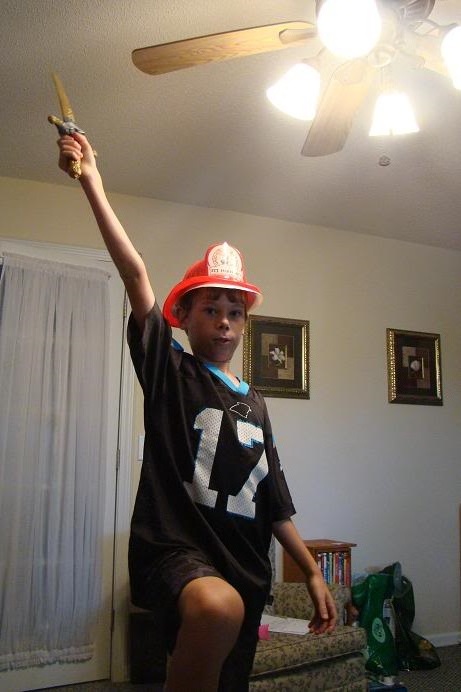
Story of the World Activity Book
King Narner, the White Crown King, became King of all Egypt, wearing the former Red Crown King's crown on top of his own!
(See the white crown peeking out from under the red?)
I laughed and laughed throughout the whole show! I wish I'd gotten it on videotape!! (Actually I do have the tiniest fraction of it on video tape, but wish I'd gotten the whole thing!) The whole enactment only lasted a minute and a half or so, but was absolutely priceless....!
Following the historical enactment of the unification of Lower and Upper Egypt, we marked Ancient Egypt, as well as the Fertile Cresent (so we could see their proximity to one another) on one of the maps in the Story of the World activity book. Just for fun, my son also drew the two kings fighting their battle, on the map.
Spelling
After science, we worked on spelling. I don't use a spelling curriculum. Instead I'm going through a list of words, pretesting my son on a small group at a time. Those that he misses in the pretest, we work on for the next week.
We have a large spelling mat which we purchased from Crayola Rocket Minds several years ago. It's still our favorite way to practice spelling! (Not that we use it every day, as variety is the spice of life!) Normally, my son jumps from letter to letter on the mat, spelling out whichever word I've called out. He has lots of fun doing it! Sometimes we change places, and he calls out the word and has me jump. Ever so often I'll purposely misspell a word and it's his job to catch me at it! If he doesn't notice a word I've misspelled, I get a point! If he does notice, he gets a point. When the game ends, the one with the most points wins!
On this particular Thursday though, my son suggested a new game with the Step 'n' Spell mat. The day before we'd played a Toss Across game with bean bags, so remembering the fun we'd had then, he suggested that instead of jumping from letter to letter, this time he'd throw the bean bags on the letters. He enjoyed this game too, so I'm sure we'll be repeating it other days as well! And the good news is, he made a 100 on his written spelling test the following day! Yay!
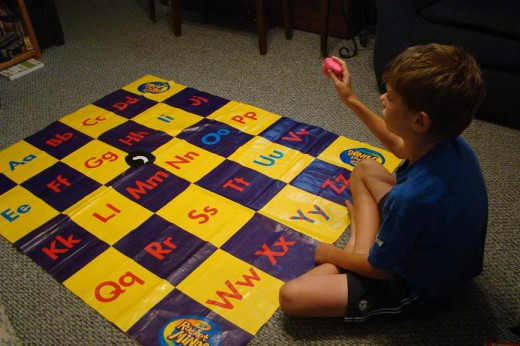
Step n' Spell
I couldn't find a link to the same Step 'n Spell product that we have, but found a similar one, in case any of you would like to give it a try as well!
Science - Science has long been one of our most favorite subjects!
Our current focus in science is an in-depth look at the human body. We started the school year by reviewing cells, which we'd originally learned about two years ago, and are now learning about digestion.
We started our science lesson for the day by reading about digestion from The Usborne Internet Linked Complete Book of the Human Body. As we sat on the sofa and read together from the book, we often stopped and talked about what we were reading, asked questions, and looked at pictures of various parts of the digestive system that I'd gathered in other books. Following that, we moved on to doing some of the science experiments and projects about digestion that can be found in How The Body Works: 100 Ways Parents And Kids Can Share The Miracle Of The Human Body. After we did some microscope work, we took apart and put back together again a model of the human body.
How long are our digestive tracts?
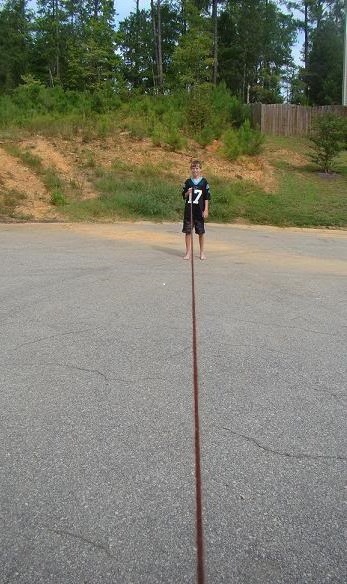
Just how long is our full digestive system, anyway?! (An adult's digestive system is about thirty feet long!)
Digestion Begins in the Mouth
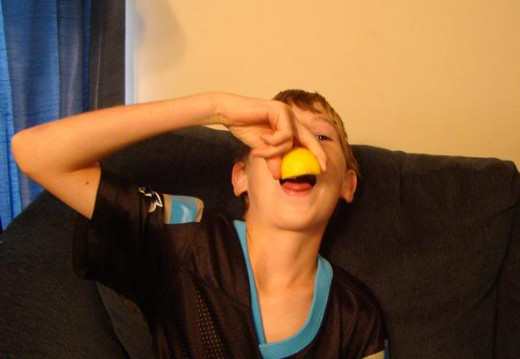
Peristalisis
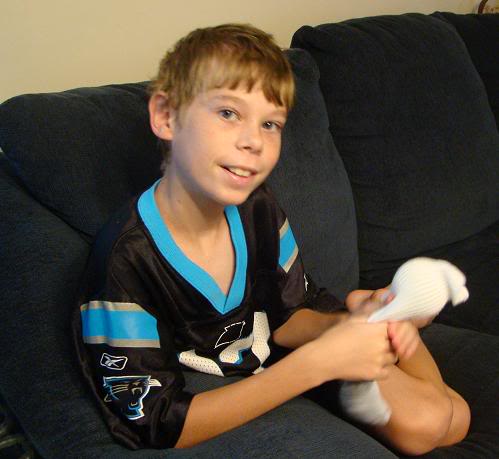
Food moves through our digestive system through the process of peristalisis. Squeezing a tennis ball through a sock is a good way to learn how the process of peristalisis works!
Cells Are Permeable
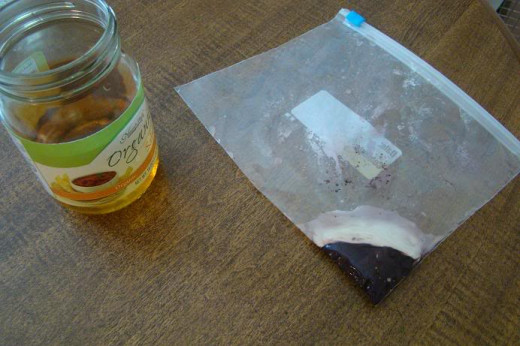
Cell Permeability Lab
What do you think? Can iodine pass through the plastic in a freezer bag? Apparently it can. In the photo above, we're checking on the results of an experiment we did earlier. In the experiment, we put water and iodine into a glass jar. Then we measured some cornstarch and a tiny amount of water into a freezer bag. We sealed the bag closed and carefully lowered it into the jar of iodine water, making sure the zippered end of the bag stayed several inches above the jar. When we returned, we discovered that even though the bag had not filled up with the water that was in the jar, it had allowed some of the iodine from the jar to enter the bag and react with the cornstarch. The cornstarch in the bag had been snow white, but look at it now!
In a similar way, cells allow certain things to pass into and out of them.
Studying Slides
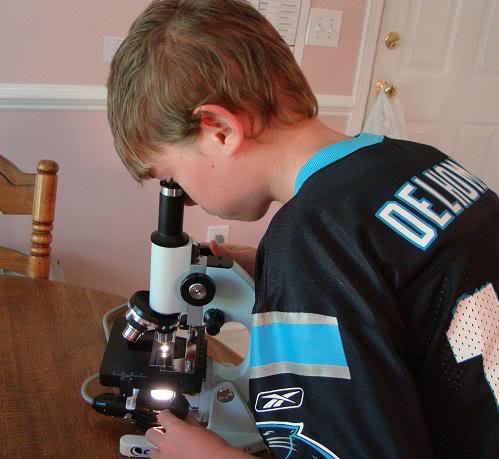
Smartlabs Human Body Kit
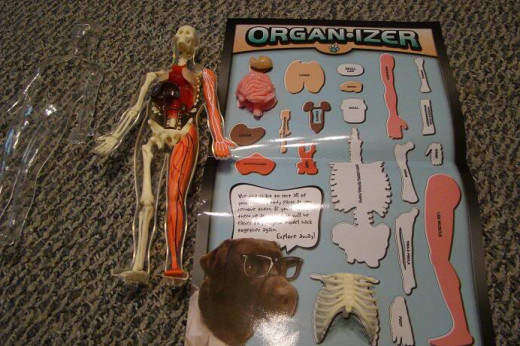

Smartlabs Squishy Human Body
This is a really neat kit which allows us to learn about the human body by taking apart and putting back together again a model that includes the skeleton, muscles, organs, etc. It comes with a mat to place the body parts on as you remove them, which aids in identifying them. It also comes with a guide which tells all about the various systems of the body. We've found the Smart Lab: You Explore It- Human Body kit to be a lot of fun to work with, and of course it's very educational as well!
In case you're interested in any of these science-related items yourself, here are some links to where you can purchase them, and/or find out more about them.

500x Power Microscope
A Celestron 44104 500x power microscope, just like the one pictured here, was a Christmas present to my son last year. He has really enjoyed it! He now keeps it on his desk (under the cover it came with), ready to use at a moment's notice.
He had a less expensive microscope, but found that it just didn't work that well. The higher magnification combined with the electric light source on this Celestron microscope really make a huge difference, allowing him to see so much more detail than he could with his old microscope.
The Human Body
We've recently added this book to our curriculum. It has so many fabulous and interesting activities pertaining to the human body! Most of the activities also come with a sheet to record your data and other information.
Usborne Complete Book of the Human Body
This book has a lot of factual information, as well as several colorful illustrations on every page! This book is the primary book we are using for science, while supplementing with the others.
Math - Algebra 1
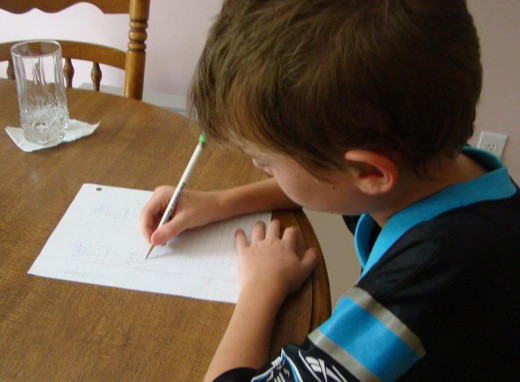
My son is doing algebra 1 this year. At this level, we do more paper and pencil work than manipulative work, although that doesn't mean we never have any hands-on activities for algebra. We do. Manipulatives are particularly useful for explaining difficult concepts. Hands-on activities, such as playing store (or going to the real store), can also be helpful in reviewing things learned in other years, such as how to figure out the tax on an item, or discovering how much you'll save on an item that's 60% off.
Another day I'll write about some of my hands-on methods for explaining various algebra concepts.

Writing
Creative Writing, Factual Reports, etc.
My son is taking a writing class with our homeschool group. Not only does it involve one group class a week, but most weeks there is also a homework writing assignment. The students all read their stories, poems, and reports to one another in class (giving them a real reason to write! They all seem to love sharing their writings with one another!) and do other writing related activities together. At home we're supplementing this class with the Wordsmith program.
Sometimes my son does his writing on the computer, and other times we do it with a clipboard and paper outside, sitting on the porch swing, for example. Once last year we walked to the creek to write our nature related haiku. That was a memory I think we'll both always treasure!
The Wordsmith program comes in several levels.
Vocabulary
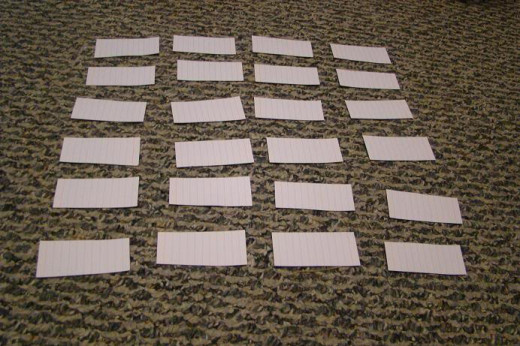
Wordly Wise Vocabulary
We enjoy the Wordly Wise program for vocabulary. It introduces the words for the week, then has several activities to do to help the student learn the words. My son and I play several games with the words as well, such as Go Fish or Concentration (matching the words to their definitions), as pictured above.
Of course, vocabulary comes up quite naturally as we read together too. Vocabulary in books we're reading provides wonderful teaching moments!
Wordly Wise Vocabulary program comes in many levels!
Homeschooling Resources
The Homeschooling Handbook! - An excellent homeshooling book to get you started!
A must read for anyone who is considering homeschooling. -- Donna E. Nichols


















